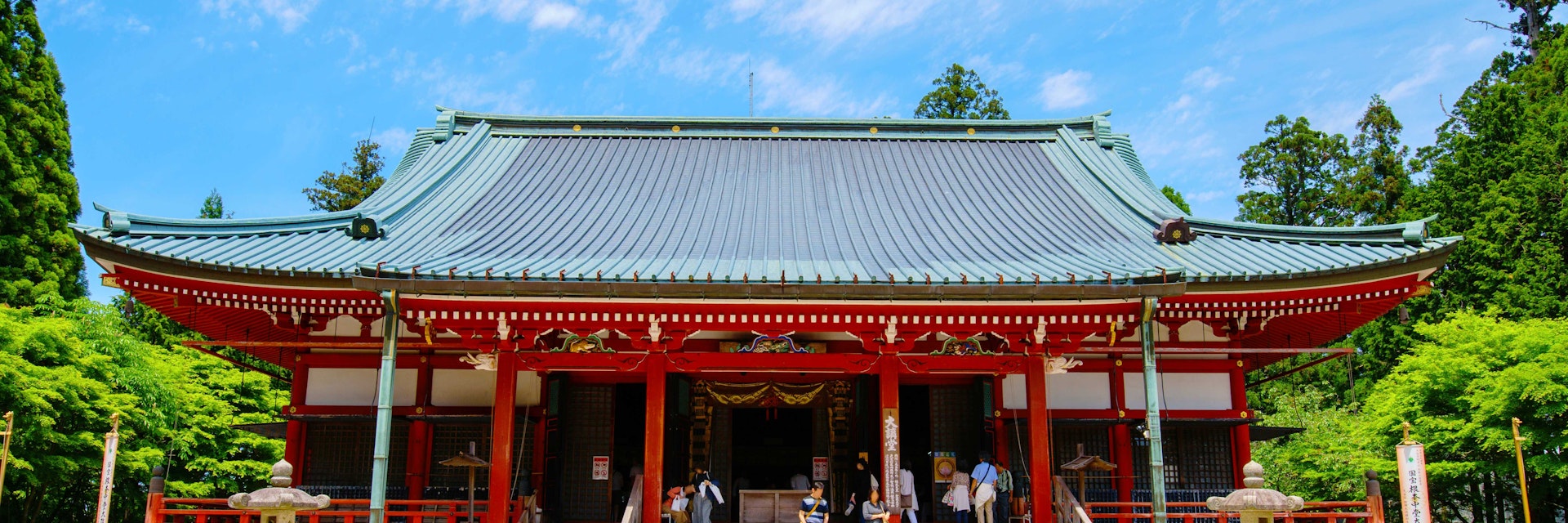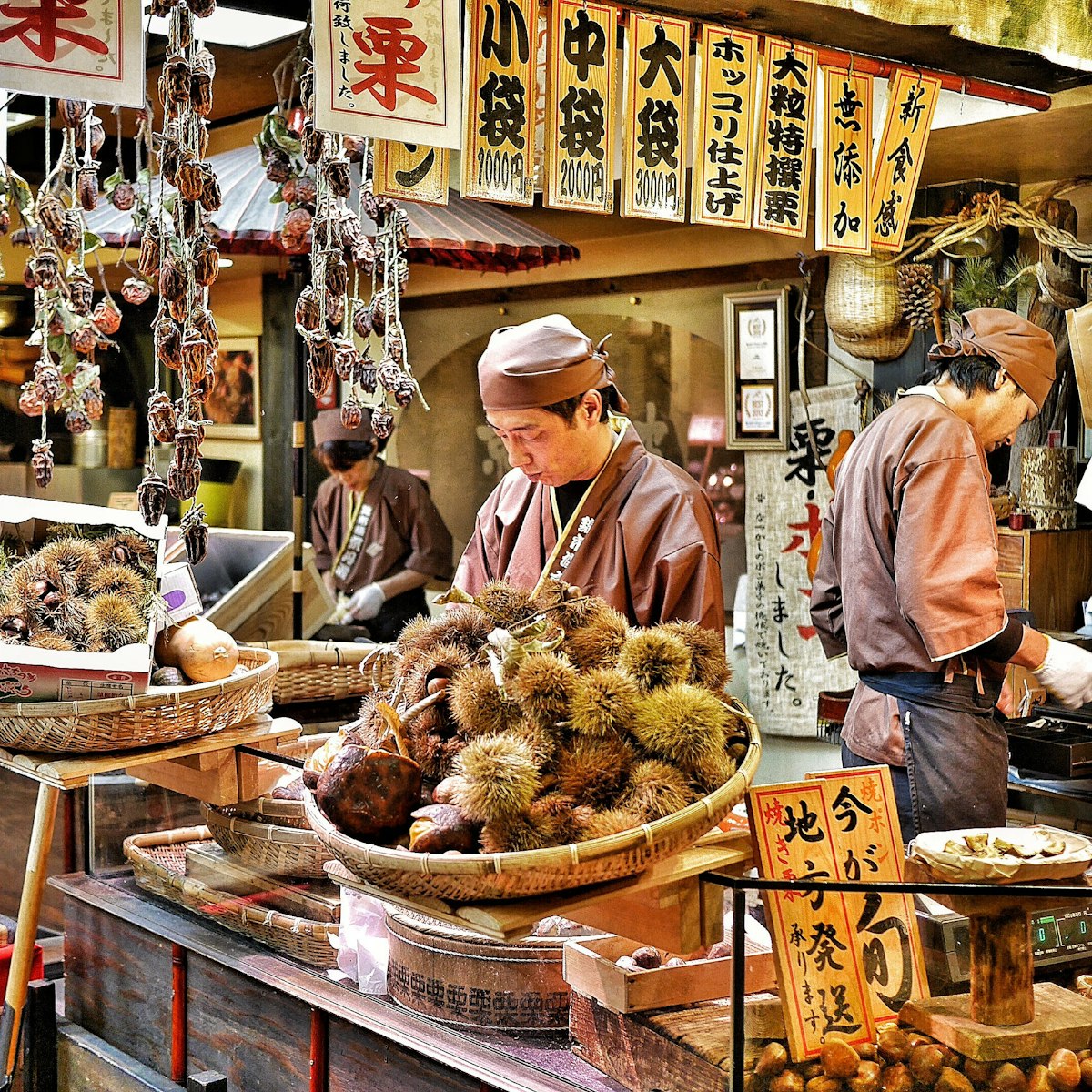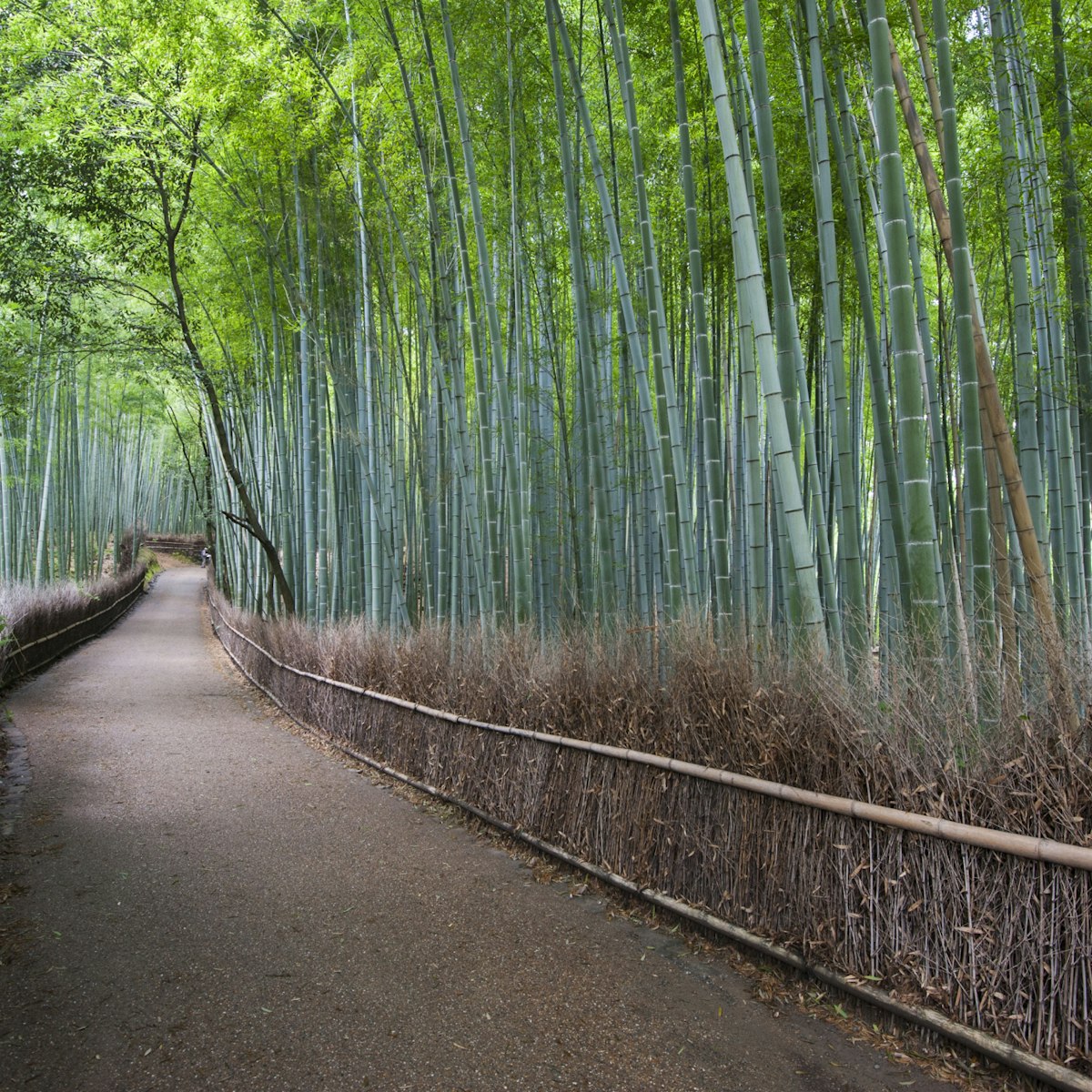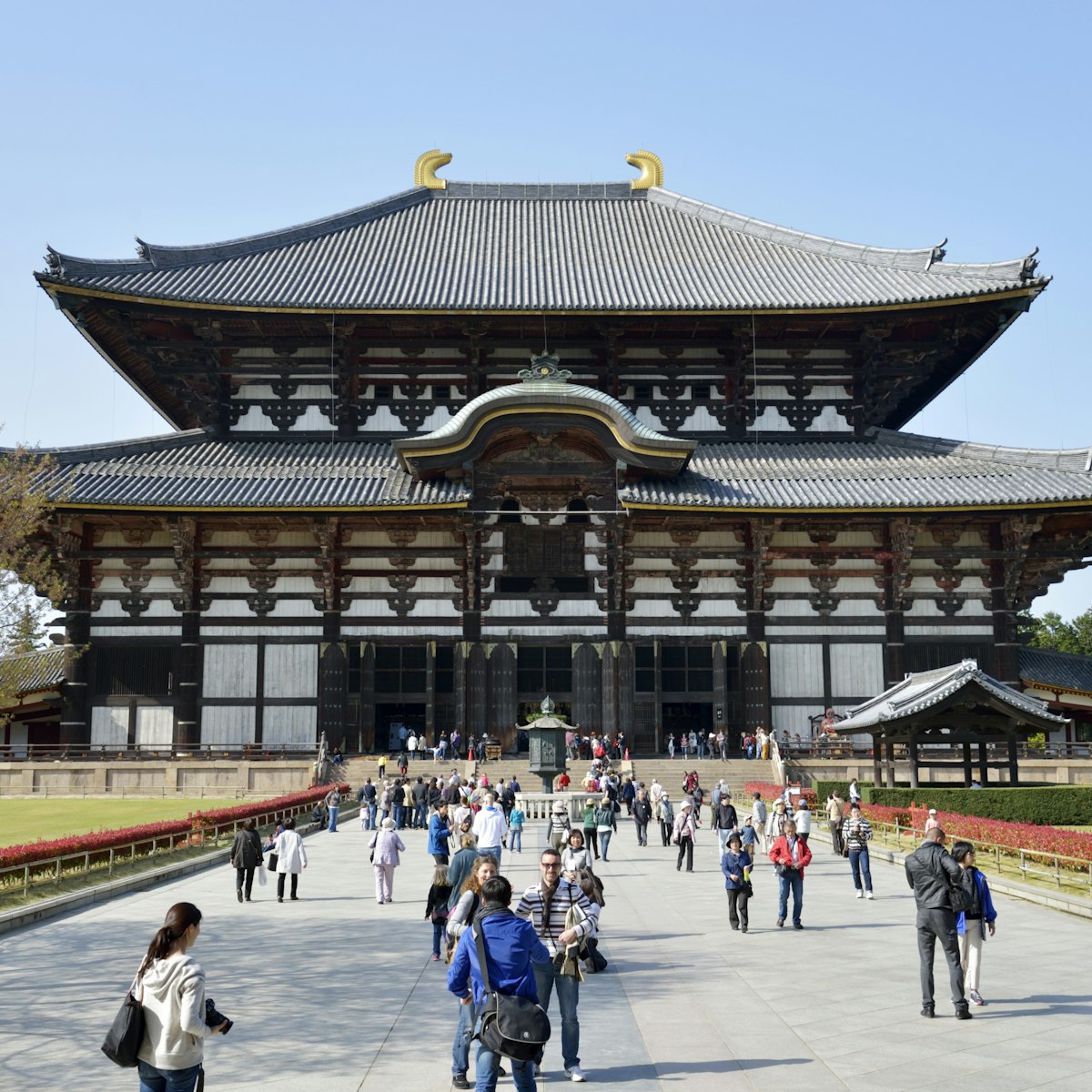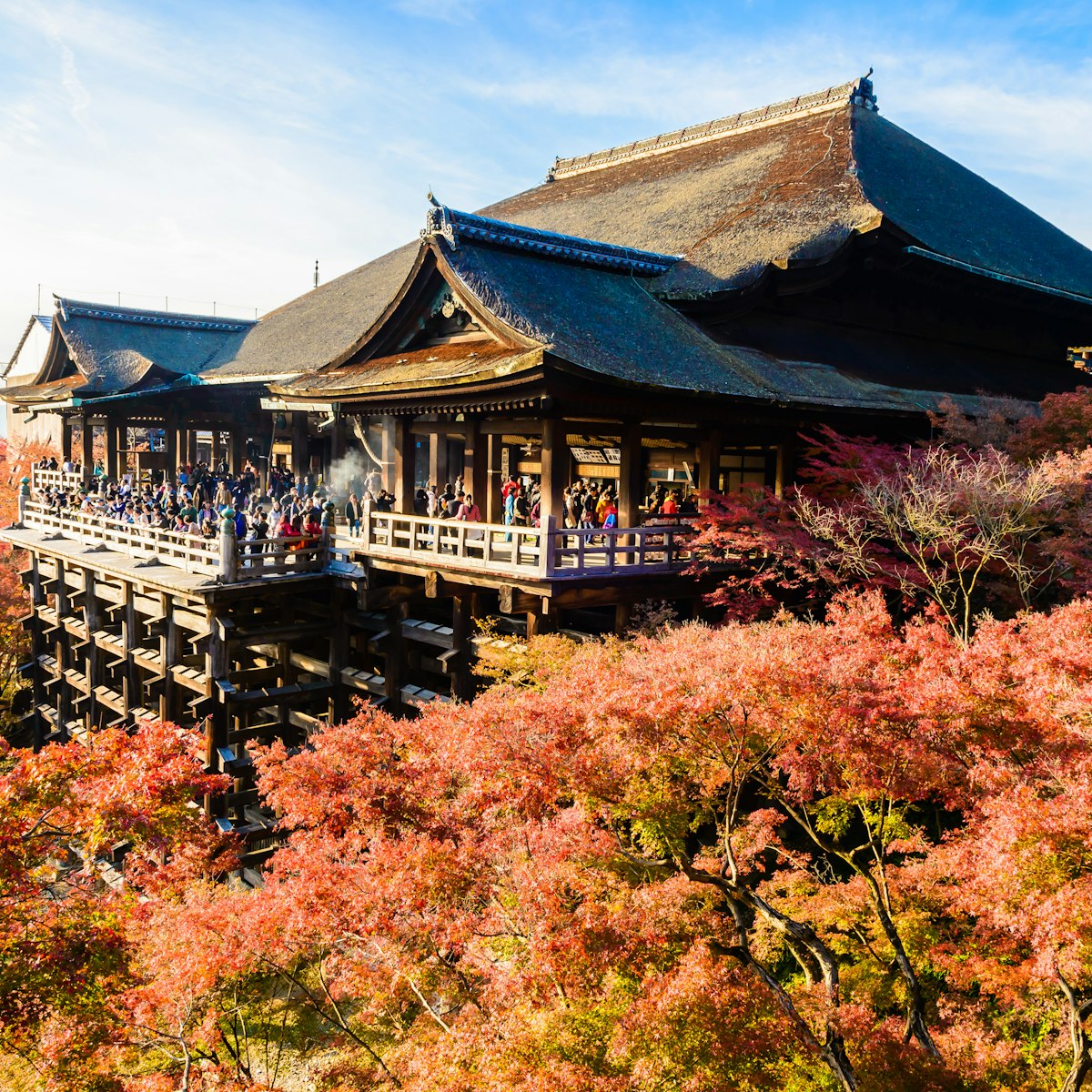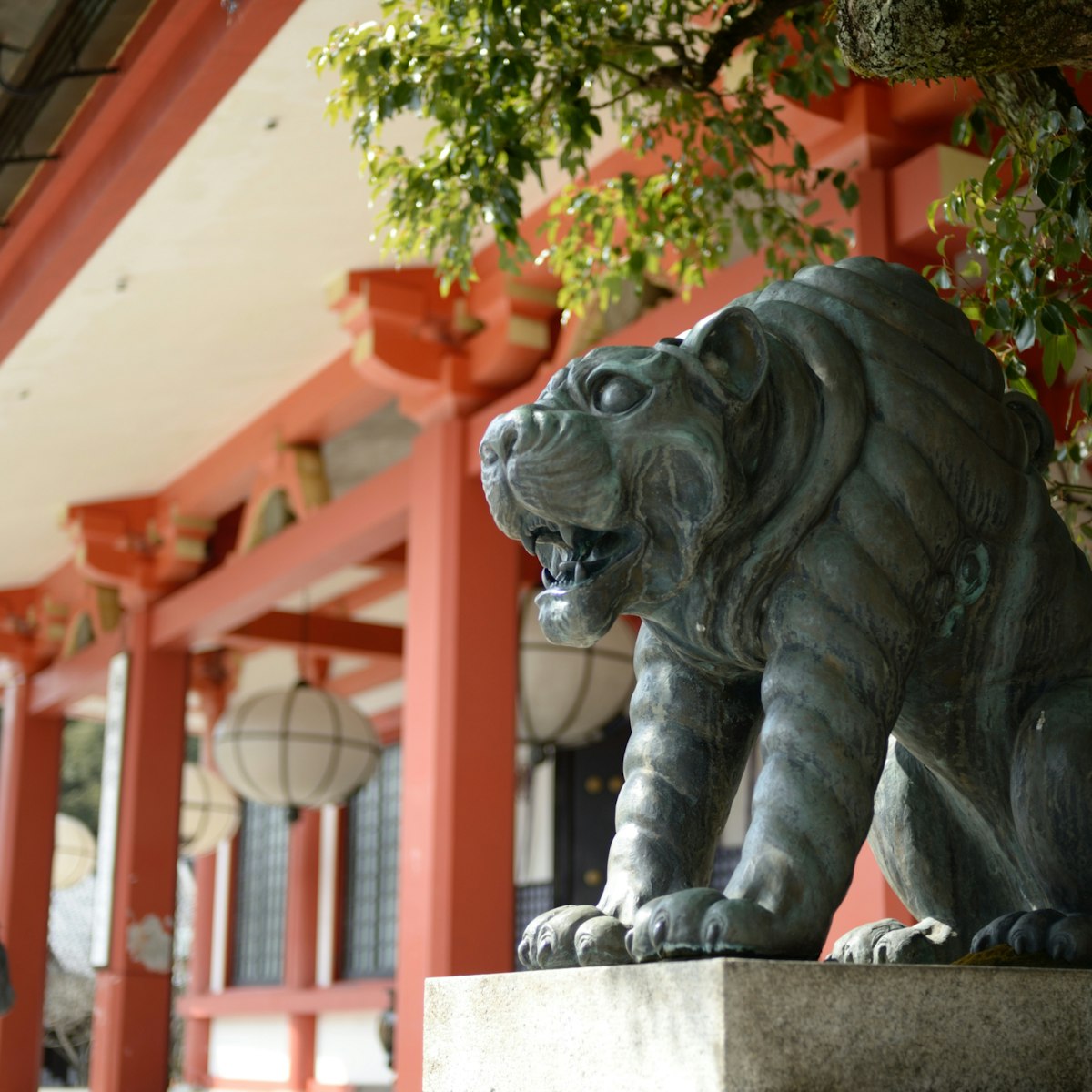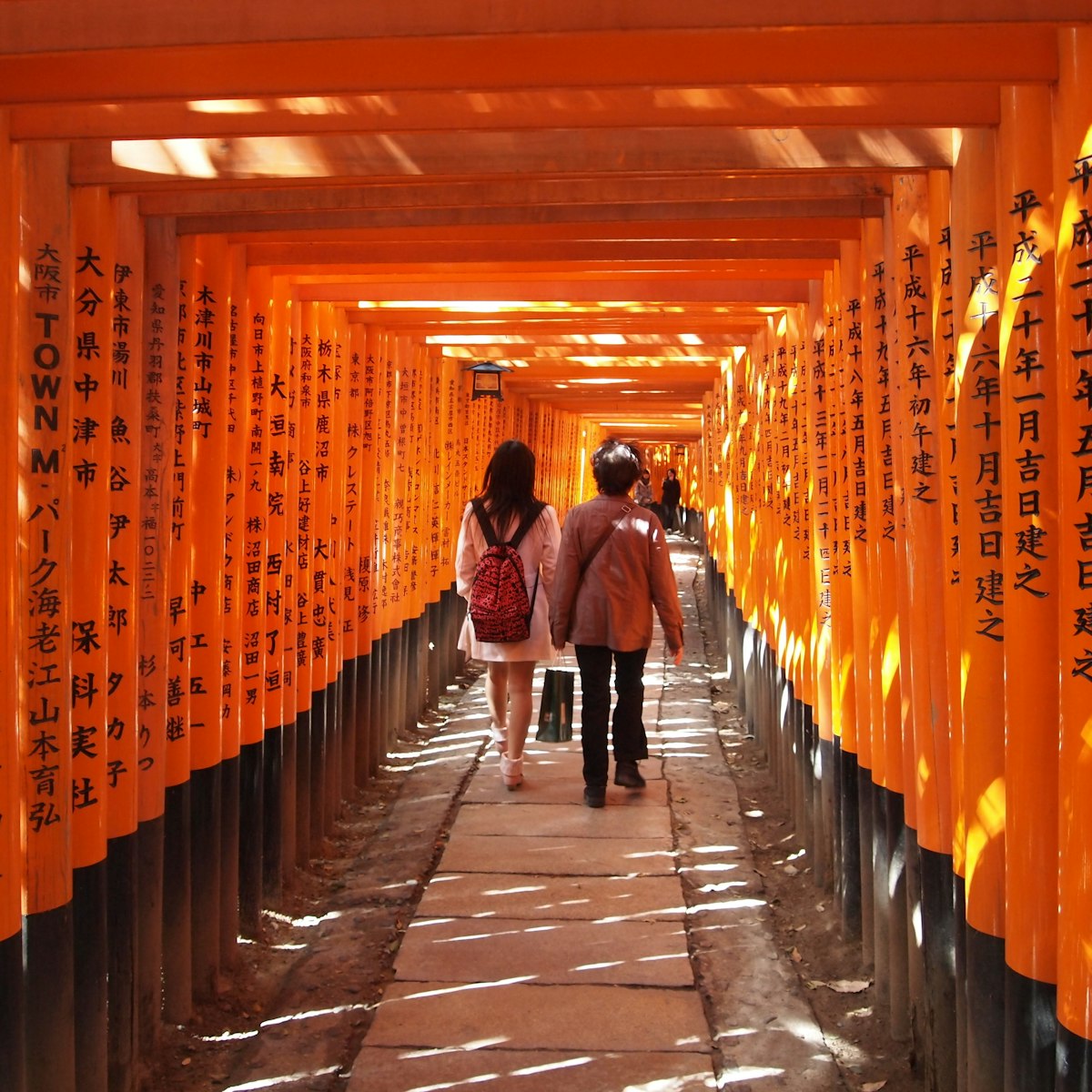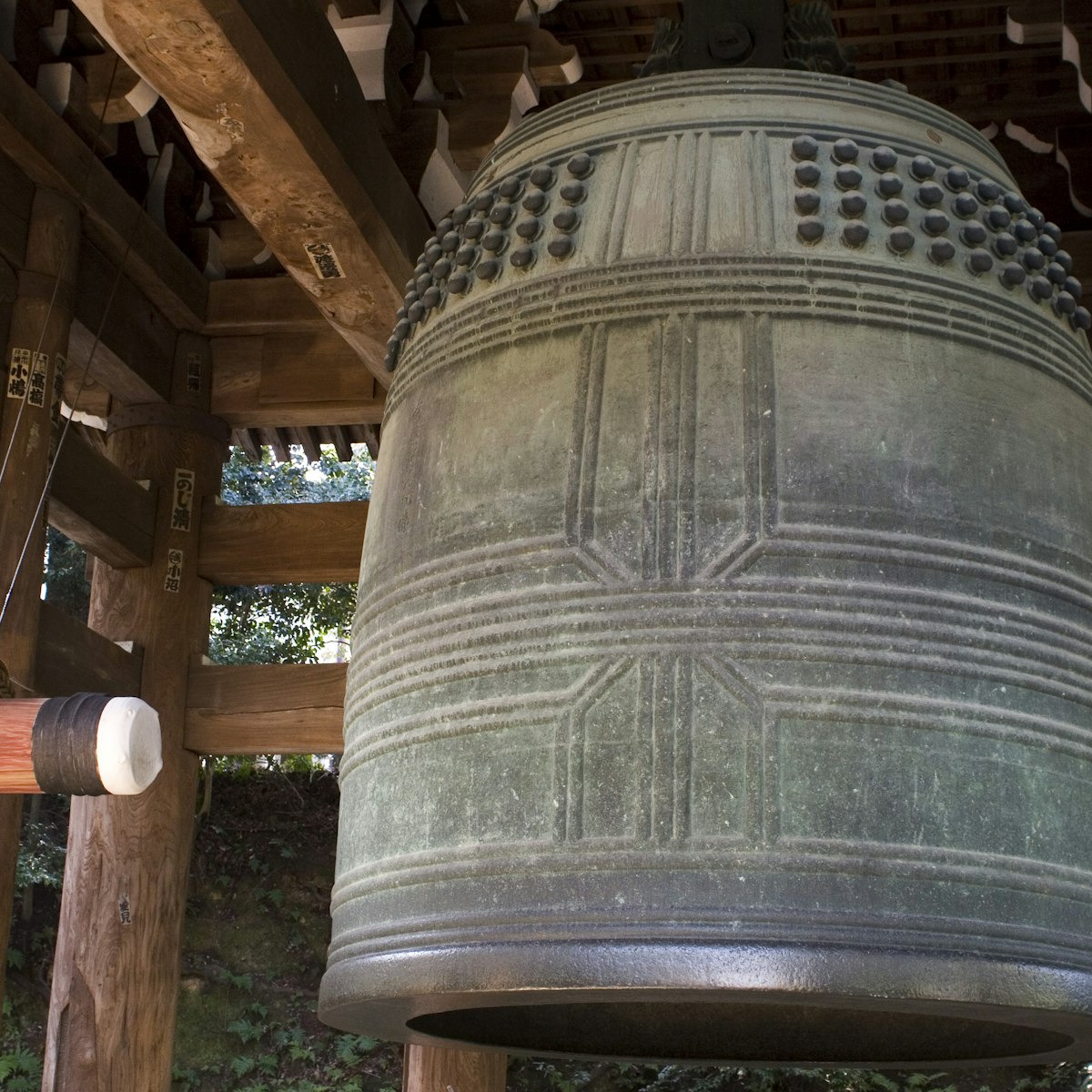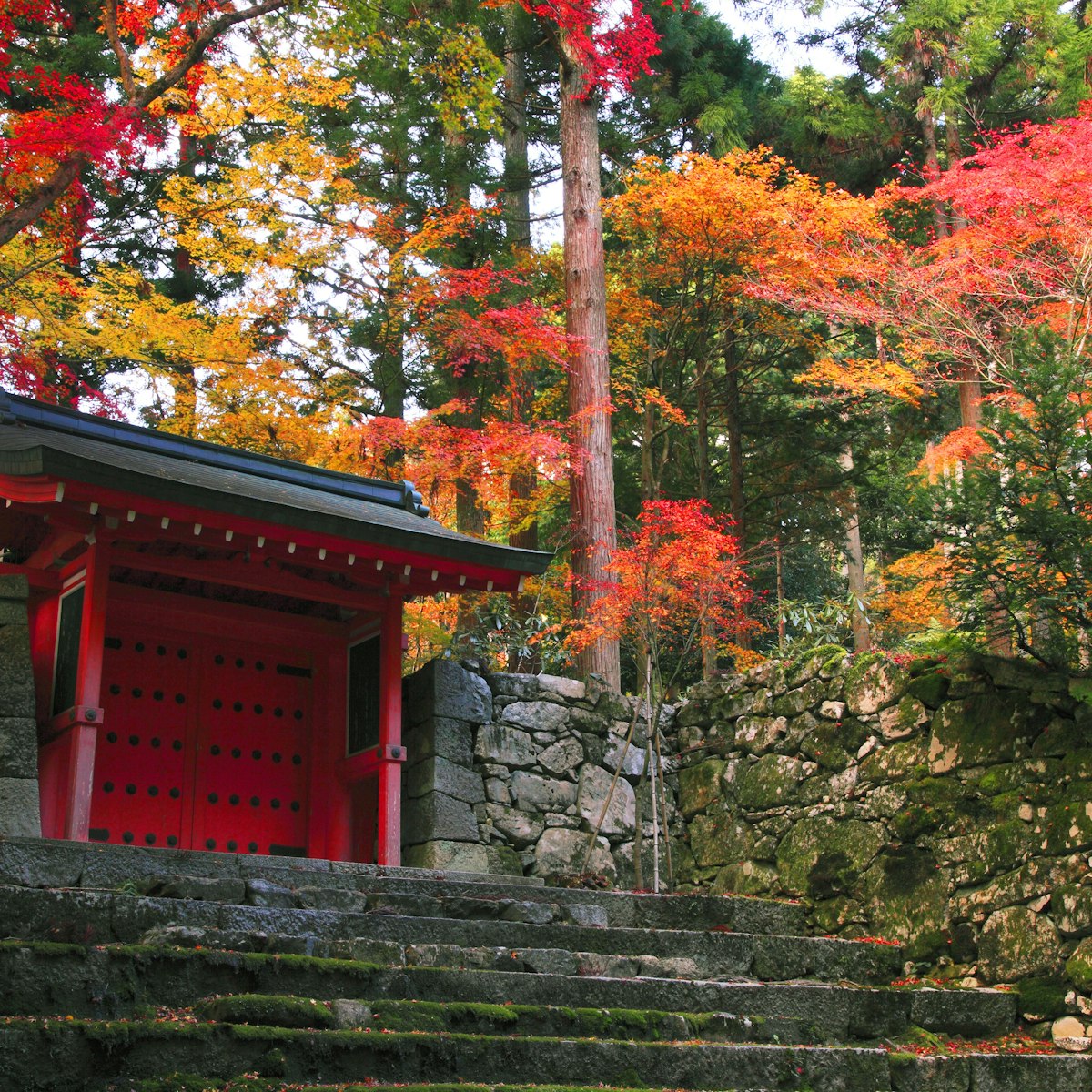Located atop 848m-high Hiei-zan (the mountain that dominates the skyline in the northeast of the city), the Enryaku-ji complex is an entire world of temples and dark forests that feels a long way from the hustle and bustle of the city below. A visit here is a good way to spend half a day hiking, poking around temples and enjoying the atmosphere of a key site in Japanese history. There are some incredible views of the mountains and Biwa-ko (Lake Biwa).
Enryaku-ji was founded in 788 by Saichō, also known as Dengyō-daishi, the priest who established the Tenzai school. This school did not receive imperial recognition until 823, after Saichō’s death; however, from the 8th century the temple grew in power. At its height, Enryaku-ji possessed some 3000 buildings and an army of thousands of sōhei (warrior monks). In 1571 Oda Nobunaga saw the temple’s power as a threat to his aims to unify the nation and he destroyed most of the buildings, along with the monks inside. Today only three pagodas and 120 minor temples remain.
The complex is divided into three sections: Tōtō, Saitō and Yokawa. The Tōtō (eastern pagoda section) contains the Kompon Chū-dō (Primary Central Hall), which is the most important building in the complex. The flames on the three dharma lamps in front of the altar have been kept lit for more than 1200 years. The Daikō-dō (Great Lecture Hall) displays life-sized wooden statues of the founders of various Buddhist schools. This part of the temple is heavily geared to group access, with large expanses of asphalt for parking.
The Saitō (western pagoda section) contains the Shaka-dō, which dates from 1595 and houses a rare Buddha sculpture of the Shaka Nyorai (Historical Buddha). The Saitō, with its stone paths winding through forests of tall trees, temples shrouded in mist and the sound of distant gongs, is the most atmospheric part of the temple. Hold on to your ticket from the Tōtō section, as you may need to show it here.
The Yokawa is of minimal interest and a 4km bus ride away from the Saitō area. The Chū-dō here was originally built in 848. It was destroyed by fire several times and has undergone repeated reconstruction (most recently in 1971). If you plan to visit this area as well as Tōtō and Saitō, allow a full day for in-depth exploration.
You can reach Hiei-zan and Enryaku-ji by train or bus. The most interesting way is the train/cable-car/funicular route starting on the Eizan line from Demachiyanagi Station to Yase Hieizanguchi. Note that this cable-car/funicular route does not operate in winter from early December to mid-March. You can also access Enryaku-ji by the JR Kosei line from Kyoto Station to Heizan Sakamoto Station and then a bus to the Sakamoto cable-car station, which runs year-round. If you’re in a hurry or would like to save money, the best way is a direct bus from Sanjō Keihan or Kyoto stations.
Note that the Japanese word for funicular is ropeway. From the funicular station, you can hike through the wooded forest (2.2km) to the Tōtō section. Otherwise, it's a short walk to the bus station, from where you can board a bus to the Enryaku-ji Bus Center for the Tōtō section. You can hike between all three sections; otherwise the bus runs between them all quite frequently.
There's a simple canteen in the Enryaku-ji Bus Center serving noodle dishes.
